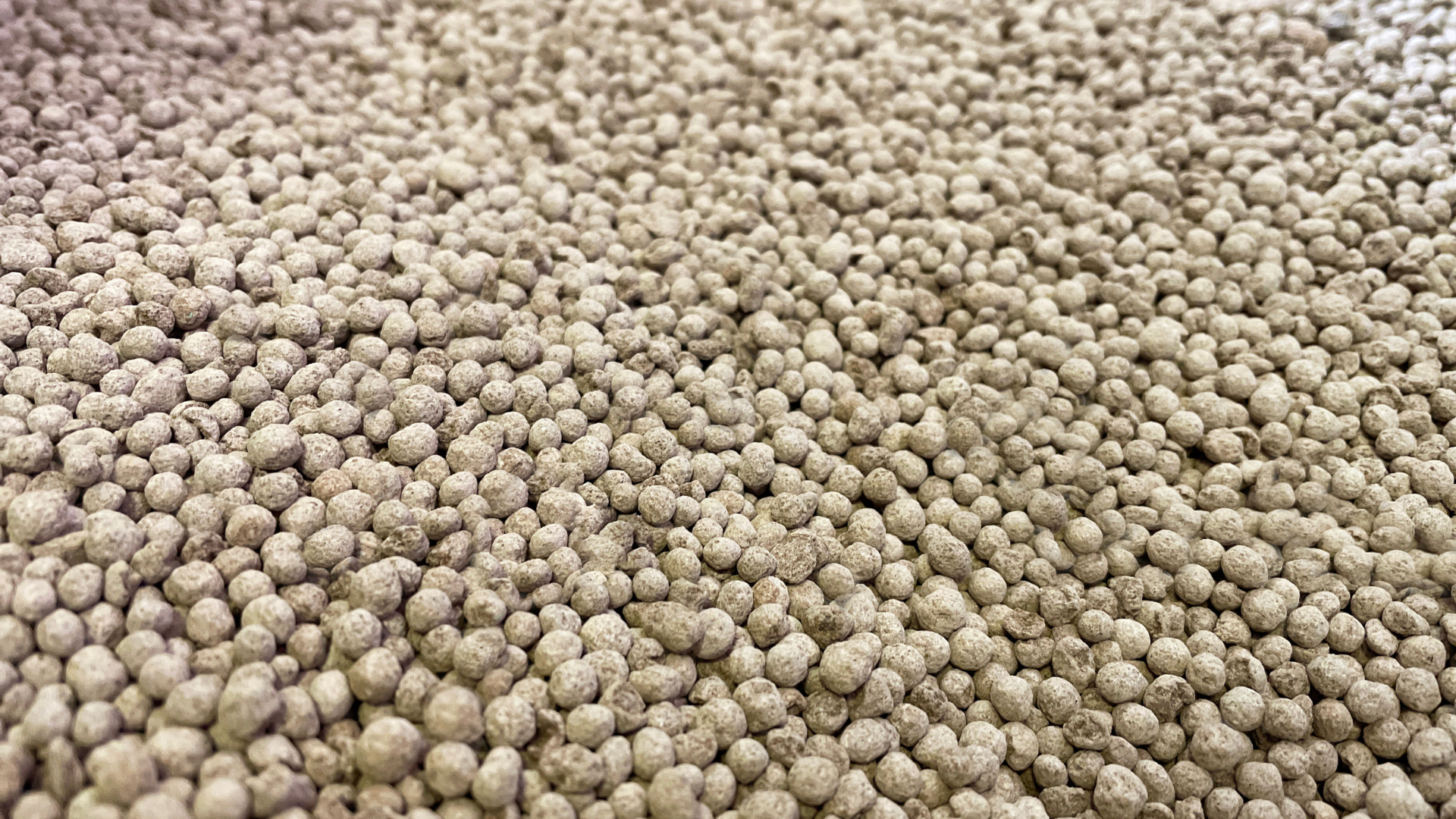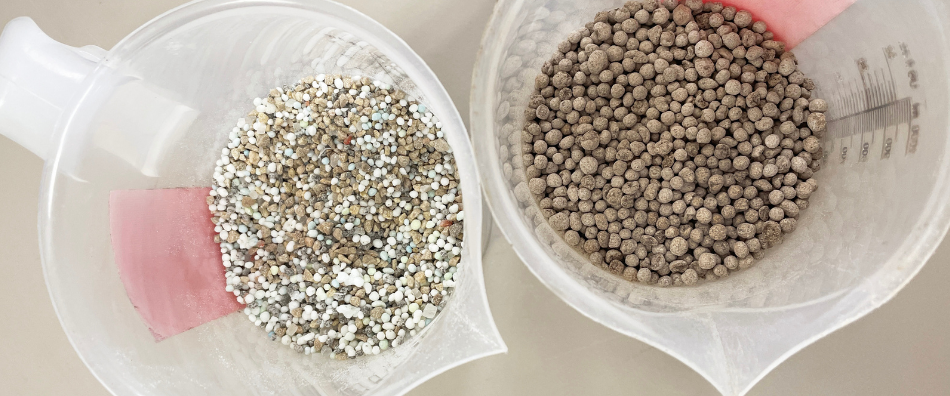Home » The Benefits of Homogeneous Carbon-Bound Lawn Fertilizer

Most homeowners enjoy and find pride in a well-manicured landscape. A green, weed-free lawn adds an attractive element that helps increase curb appeal. Applying lawn fertilizer properly is one way to achieve a great-looking lawn. However, over-fertilizing can alter the pH of the soil and under-fertilizing does not provide the plant with the needed nutrients to absorb and process photosynthesis.
It is important to note that not all fertilizers are made equal. There are several forms of fertilizer: synthetic vs organic, blended vs homogeneous, fast-acting vs slow-releasing. Each serve their own purpose and are processed differently.
The labels on lawn fertilizer products consist of three active ingredients. The first is the percentage of nitrogen (N), the second is the percentage of phosphorus (P), and the last one is the percentage of potassium (K) that are in each bag of product. These key ingredients along with other carriers and micronutrients can be collected, processed, and packaged differently.
Most fertilizer companies gather these key ingredients as separate components and blend them together in one bag. Synthetic blends are the standard form of commercially available fertilizers. They are typically cheaper to purchase, however they tend to offer inconsistent results. This is largely due to the variations in size of each of the individual nutrients and when distributed through spreaders, can be dispersed unevenly.
Another method now utilizes the latest fertilizer technology to grind and combine these nutrients into a carbon-bound homogeneous granule. With homogeneous fertilizers, each granule in each bag contains the same nutrient makeup. The term homogeneous is defined as “consisting of parts of all the same kind.” Each homogenous granule of lawn fertilizer holds within it, each of the nutrients (NPK) and other micronutrients.

Latest fertilizer technology now grinds and blends macro and micronutrients into each granule allowing more uniform distribution and nutrient uptake.
Chemically manufactured and blended, synthetic fertilizers lack necessary organic matter that is beneficial to soil health and structure. Without the ability to hold and retain moisture and nutrients, these key ingredients for plant health are washed out. This is not only wasteful and expensive, but it can threaten nearby water sources.
You can learn more about blended and homogeneous compounds here.
The term homogeneous is defined as “consisting of parts of all the same kind.”
A few of the benefits of applying a homogeneous type of fertilizer product include releasing nutrients at a steadier rate, minimizing excessive growth, and when bonded with beneficial organic matter can improve the health of your soil increasing nutrient absorption.
Another advantage to homogeneous processing is that it allows for the addition of beneficial compounds into the product such as soil conditioners, organic material, and other stimulants or coatings. The added benefits of homogeneous processing far outweigh the benefits of blended synthetic fertilizers. These benefits include:
The added peat moss integrates organic matter back into soils that have been stripped of beneficial topsoil.
Synthetic fertilizers are water soluble, dissolve, and release a flood of nutrients. Carbon bound nutrients with peat moss encourage a slower release rate and offers steadier growth with less mowing and thatch build up. Each carbon bound homogeneous granule contains the exact same amount of nutrients that break up evenly in soil.
The added peat moss integrates organic matter back into soils that have been stripped of beneficial topsoil. It can loosen clay soils and improve their porosity making it a choice ingredient in soils. ProPEAT fertilizer is an excellent choice for a carbon bound homogeneous lawn fertilizer.
You can view how ProPEAT fertilizer is made here.
Peat moss can also hold up to twenty times its weight in water, improving water retention. Adding carbon back into our soils will improve beneficial microbes, soil structure, water retention, and plant health. Peat moss also helps improve the environment by producing oxygen, reducing air pollution, and improving water quality by reducing erosion and slowing water runoff.
